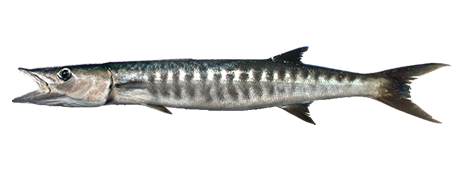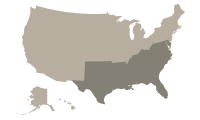
Great Barracuda
The great barracuda will eat whatever is available.

Region
South
Catch ease
Medium
Habitat
Bay, Ocean
How to identify a Great Barracuda
The first dorsal fin has five spines; the second has ten soft rays. The first rays of the second dorsal and anal fins reach to or beyond the tips of the last rays when the fins are depressed. There are 75-90 scales along the lateral line and the preopercle is rounded. The maxilla extends back as far as the eyes. Adults have irregular black blotches on the lower flanks, especially near the tail. It is the only species of barracuda that has blotches.Its habit of “tagging along” with divers while opening and closing its mouth has given more than one diver the faith to walk on water; nevertheless, barracudas do not usually attack unless speared or provoked. The barracuda should be regarded as dangerous because of its ability to inflict serious injury, in or out of water.
Where to catch Great Barracuda
The great barracuda occurs in all tropical seas except the Eastern Pacific and can be found offshore and inshore around reefs, piers, wrecks, sandy and grassy flats, and wherever smaller fish congregate. Smaller barracudas sometimes school, but the large fish are almost always loners. The following list includes additional details on where to catch this fish:
| Baitfish Patches |
| Breakers |
| Coastal Waters |
| Floating Foam and Debris |
| Man-Made Structures |
| Merging Water |
| Reefs, Wrecks, and Shoals |
| Shore Points |
| Tidal Flats |
| Bays and Estuaries |
| Channel Entrances |
| Deep Shore Water |
| Jetties and Breakwaters |
| Mangroves |
| Night Fishing |
| Ripples, Currents, Swirls and Sprays |
| Surf and Shore |
how to catch Great Barracuda
Fishing methods include trolling with plugs, spoons, and prepared baits; live bait fishing with small fishes; casting and retrieving live and strip baits as well as plugs and spoons. An angler’s cast should not land too near the barracuda, but should be retrieved past it at a fast, erratic speed. The following are fishing methods used to catch this fish:
Great Barracuda lures, tackle & bait
The following are lures, tackle or bait that can be used to catch this fish:
